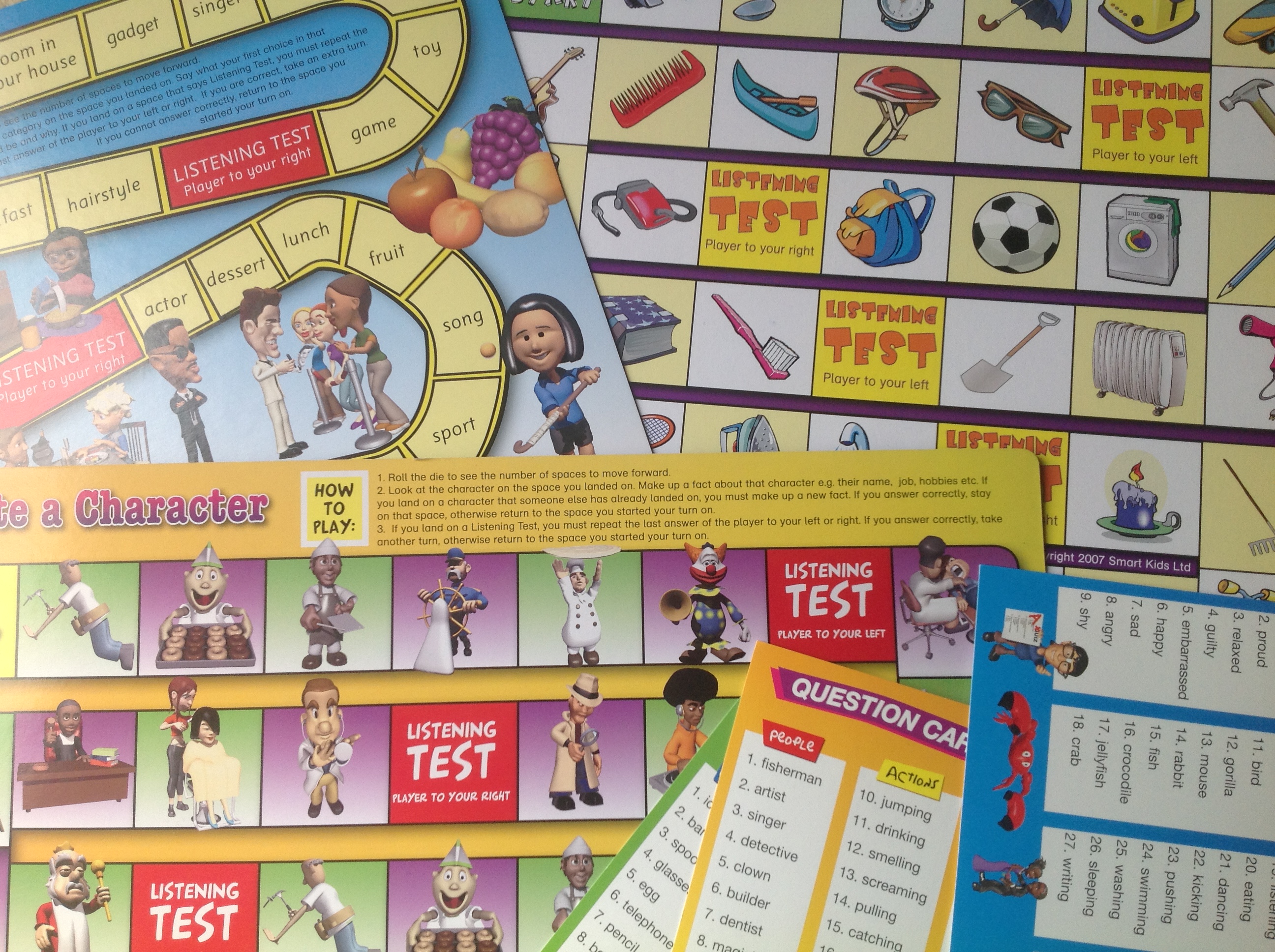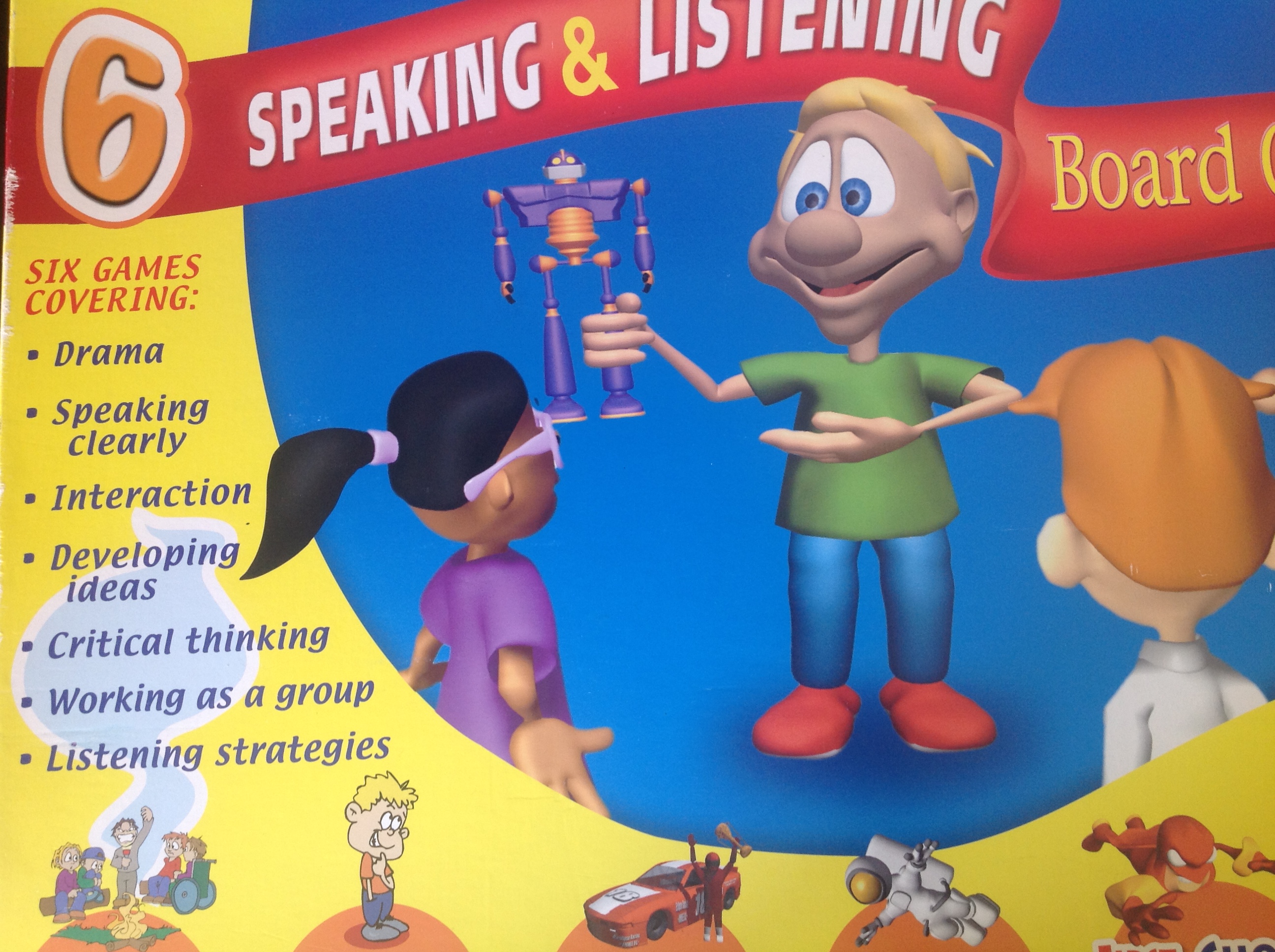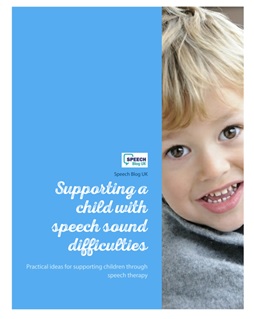I do a lot of work with junior age children (age 7-11 for anyone not in the UK) with comprehension and expressive language problems. It’s always a challenge to find materials at the right level and targeting the right skills. I find that the way things look at this age is really important – the kids I work with need a lot of visual support, but they don’t want things to look babyish. They respond so much better to colour pictures (as most children of all ages do, I find) and if photos look too old-fashioned they notice more at this age, and aren’t as interested. Get the activity and materials right and the child is much more engaged and hence learns more.
One of my favourite places to buy from for this age group is SmartKids. (The US branch is here). They make lots of great resources, but today I’m going to focus on their board game sets, as they’re such great value for money – £19.99 for a set of 6 or 7. They do lots of sets, but the best ones for speech and language therapy are the questioning set and the speaking and listening set. Today I’m going to talk about the speaking and listening set.
This has 6 boards, 3 of which I use quite frequently. One works on describing skills. Each player has a card with around 50 numbered words to describe. They are split into categories – things, actions, feelings, people… Whichever number you land on, you look up that item and describe it for the other players to guess. The child does need to be able to read as there are no pictures, but aside from that it’s a great description game. The feelings are noticeably more difficult to describe, but I usually give them a lot more help with these.
The first choice game was a hit with a 10 year old girl I worked with yesterday. Here each square names a category and you have to say your favourite thing in that category and why ( eg favourite animal or favourite lunch). It’s great for starting to work on giving opinions and realising that everyone likes different things and thinks different things and that’s ok. It also has a nice feature in that some of the squares are labelled Listening Test. If you land on one of these, you have to remember what the person next to you said, which means that if you’re playing with a group, they can’t switch off when it’s not their turn!
There is also a good one for responding to questions. Each square has a picture of an object and there is also a spinner. When you land on a square, you spin the spinner and answer the question it lands on – where would you find it? Why would you use it? How would you use it? Or when would you use it? The part the kids tend to find most tricky is answering the right question. Those question words can be really tricky, and I find this game useful for teasing out the differences between why and how, and between when and where.
As well as these 3, you also get 3 more games, focusing on mime, making up characters, and telling a story, but I haven’t used those very often, so I won’t comment on them here, except to say the pictures are quite cartoony and the one time I did use the story one, we found it really hard to make a cohesive story rather than one that just goes “and then…. And then….”. That may just be that I haven’t used it enough and the child had difficulty with story- telling however.
Anyway, £19.99 for 6 good quality board games is pretty good value in my book, even if you only use 3 or 4 of them regularly. You can buy these from Smart Kids UK or the US branch.
I have not been asked to write this review – I’m just sharing something that I find useful.
What other resources do you use with this age group?








Leave a Reply